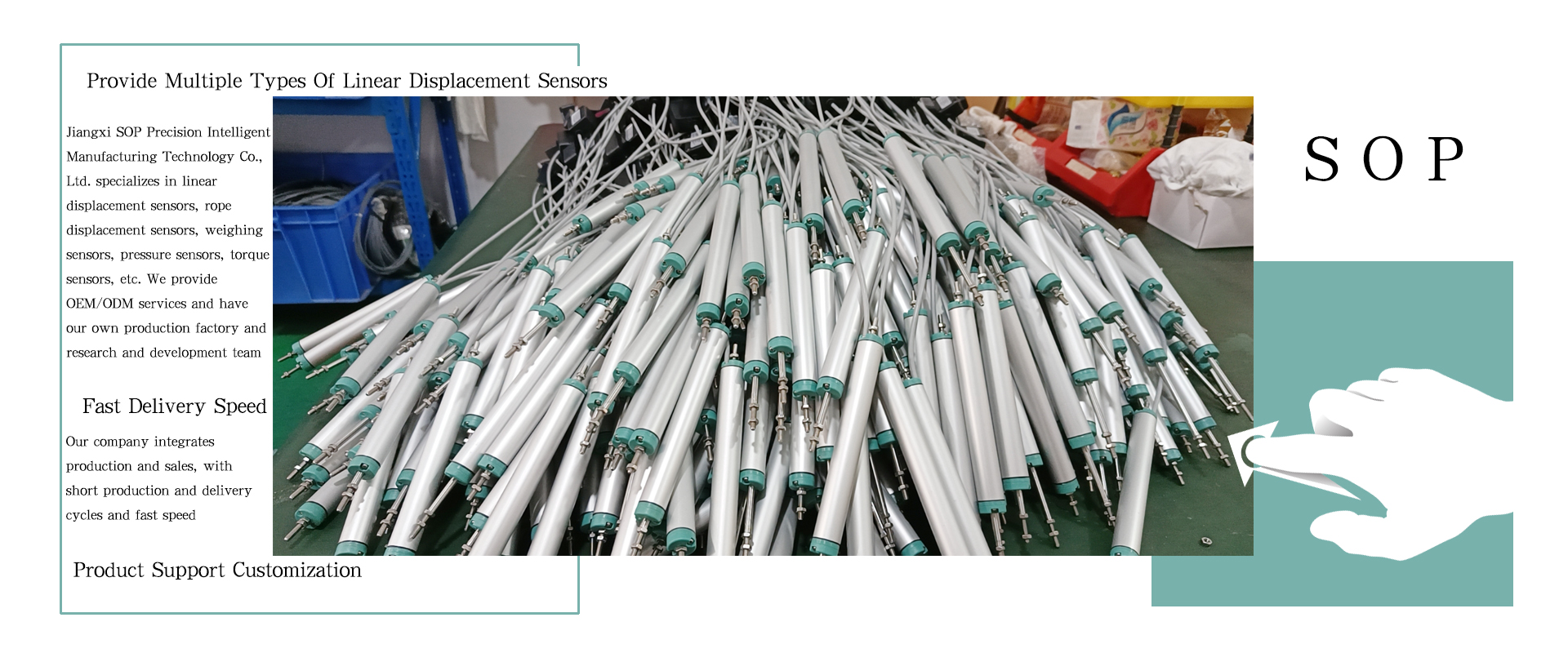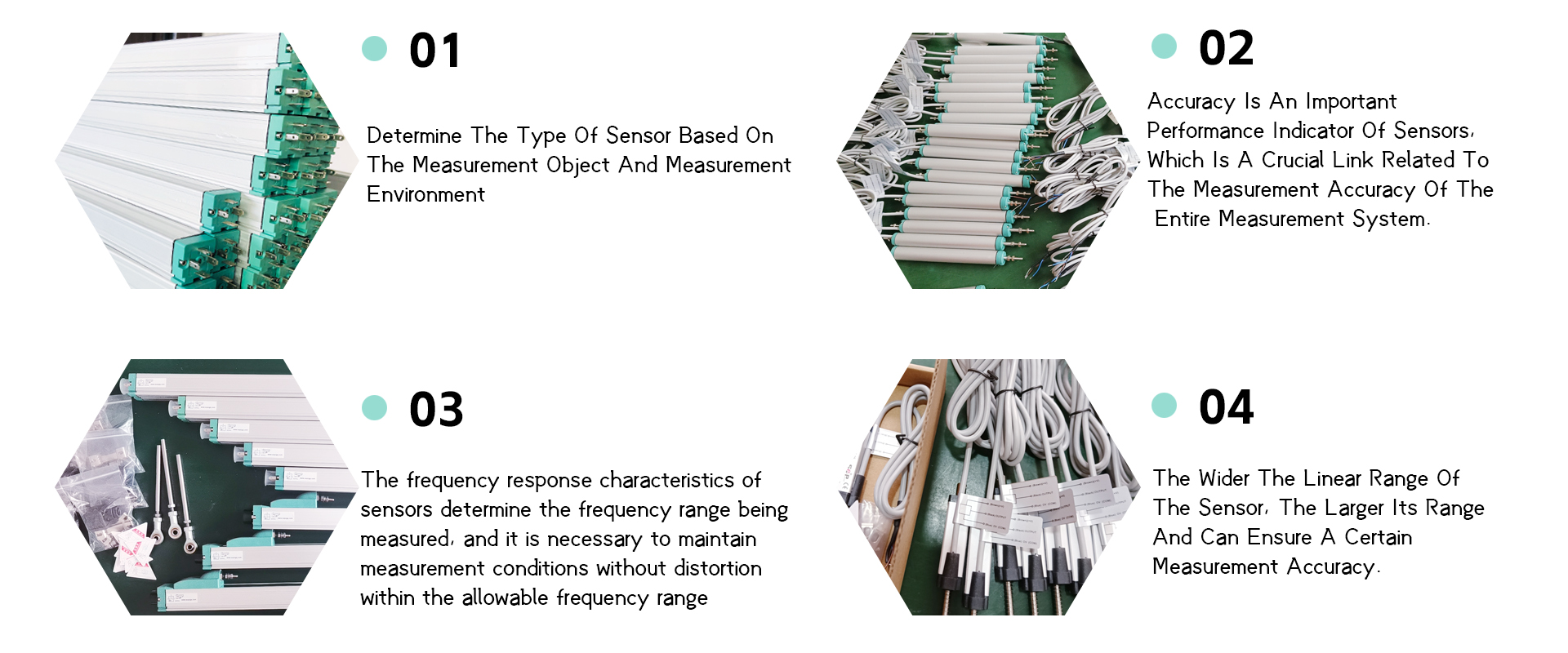How to choose a suitable linear displacement sensor
How to choose a suitable linear displacement sensor
1. Determine the type of sensor based on the measurement object and measurement environment
To carry out a specific measurement work, the first thing to consider is which principle of sensor to use, which requires analyzing multiple factors before determining. Because even when measuring the same physical quantity, there are multiple principle sensors available for selection. Which principle sensor is more suitable depends on the characteristics of the measured object and the usage conditions of the sensor, taking into account the following specific issues: the size of the measuring range; Requirements for sensor volume at the measured location; Is the measurement method contact or non-contact; The method of signal extraction, wired or non-contact measurement; The source of the sensor, the quality of the product, and whether the investment is acceptable.
After considering the above issues, it is possible to determine which type of sensor to choose, and then consider the specific performance indicators of the sensor.
2. Sensitivity selection
Usually, within the linear range of the sensor, it is desirable for the sensitivity of the sensor to be higher. Because only when the sensitivity is high, the value of the output signal corresponding to the measured change is relatively large, which is beneficial for signal processing. However, it should be noted that the sensitivity of the sensor is high, and external noise unrelated to the measured object is also easily mixed in, which can be amplified by the amplification system and affect the measurement accuracy. Therefore, it is required that the sensor itself should have a high signal-to-noise ratio and minimize the interference signals introduced from the outside.
The sensitivity of sensors is directional. When the measured quantity is unidirectional and requires high directionality, sensors with lower sensitivity in other directions should be selected; If the measured vector is multidimensional, the smaller the cross sensitivity of the sensor, the better.
3. Stability
The ability of a sensor to maintain its performance unchanged after a period of use is called stability. The factors that affect the long-term stability of sensors are not only the structure of the sensor itself, but also the usage environment of the sensor. Therefore, in order for sensors to have good stability, they must have strong environmental adaptability.
Before selecting a sensor, it is necessary to investigate its usage environment and choose the appropriate sensor based on the specific usage environment, or take appropriate measures to reduce the impact of the environment.
4. Linear range
The linear range of a sensor refers to the range where the output is proportional to the input. In theory, sensitivity remains constant within this range. The wider the linear range of the sensor, the larger its range and can ensure a certain measurement accuracy. When choosing a sensor, once the type of sensor is determined, the first thing to consider is whether its range can meet the requirements.
However, in reality, no sensor can guarantee absolute linearity, and its linearity is also relative. When the required measurement accuracy is relatively low, sensors with small nonlinear errors can be approximated as linear within a certain range, which will bring great convenience to the measurement.
5. Frequency response characteristics
The frequency response characteristics of sensors determine the frequency range being measured, and it is necessary to maintain measurement conditions without distortion within the allowable frequency range. In fact, the response of sensors always has a certain delay, and it is hoped that the shorter the delay time, the better.
The frequency response of sensors is high, and the frequency range of measurable signals is wide. However, due to the influence of structural characteristics, the inertia of mechanical systems is large, and sensors with lower frequencies can measure signals with lower frequencies.
In dynamic measurement, the frequency response characteristics of the required sensor should be determined based on the characteristics of the signal (steady state, transient, random, etc.) to avoid excessive errors.
6. Accuracy
Accuracy is an important performance indicator of sensors, which is a crucial link related to the measurement accuracy of the entire measurement system. The higher the accuracy of the sensor, the more expensive its price is. Therefore, the accuracy of the sensor only needs to meet the accuracy requirements of the entire measurement system, and there is no need to choose it too high. In this way, cheaper and simpler sensors can be selected among many sensors that meet the same measurement purpose.
If the measurement purpose is qualitative analysis, sensors with high repeatability accuracy should be selected, and sensors with high absolute value accuracy should not be used; If it is for quantitative analysis and accurate measurement values must be obtained, sensors with an accuracy level that meets the requirements should be selected.
For certain special usage scenarios where suitable linear displacement sensors cannot be selected, sensors need to be designed and manufactured independently. The performance of homemade sensors should meet the requirements for use.



